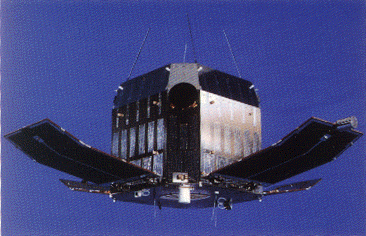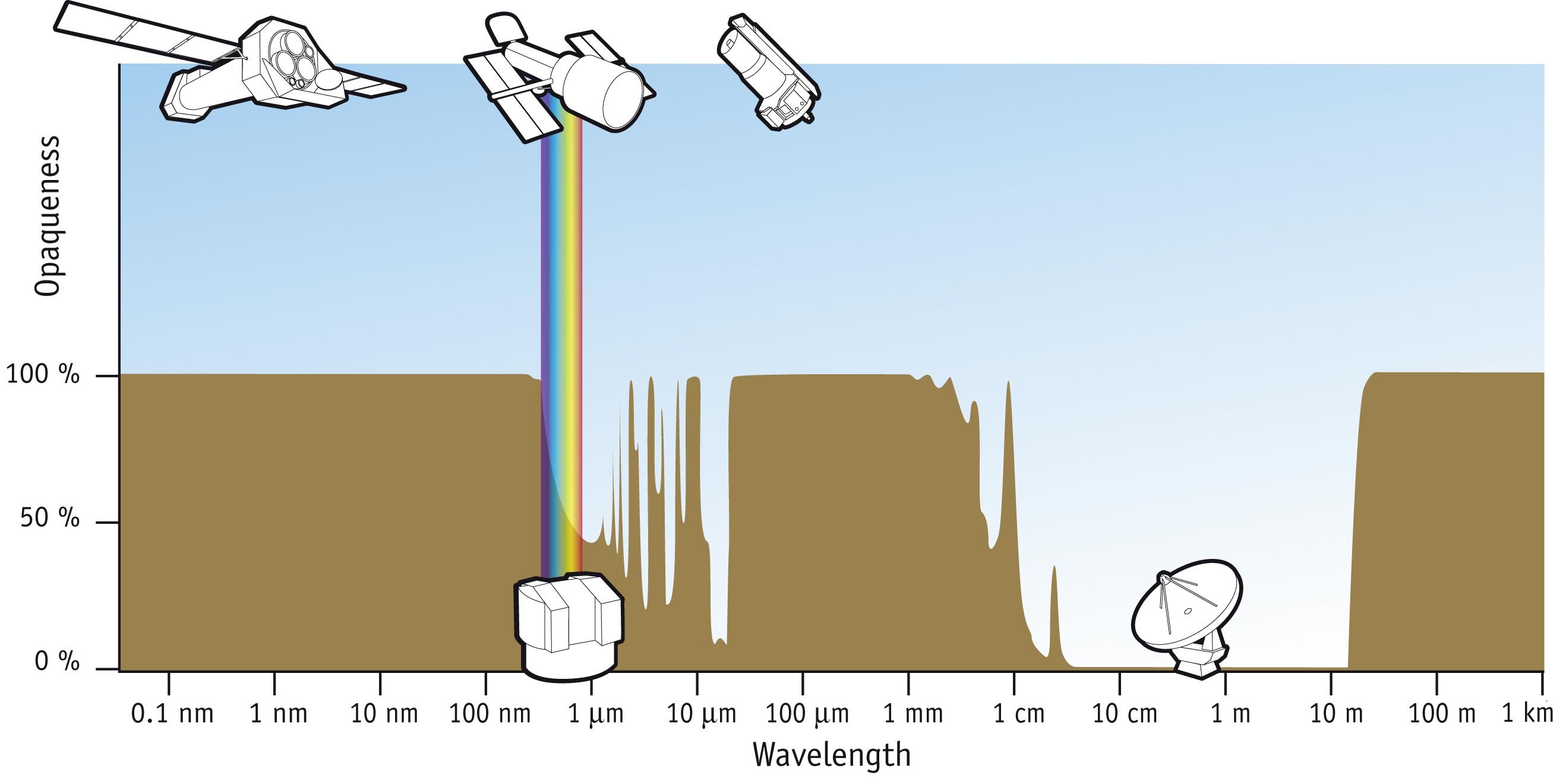|
Tenma
Tenma, known as ASTRO-B before launch (COSPAR 1983-011A, SATCAT 13829), was a Japanese X-ray astronomy X-ray astronomy is an observational branch of astronomy which deals with the study of X-ray observation and detection from astronomical objects. X-radiation is absorbed by the Earth's atmosphere, so instruments to detect X-rays must be taken to ... satellite, developed by the Institute of Space and Astronautical Science. It was launched on February 20, 1983, using a M-3S rocket on the M-3S-3 mission. Battery failure in July 1984 caused the operation to become limited, and continuing problems lead to the termination of X-ray observation in 1985. It reentered the atmosphere on January 19, 1989 (other sources, for example the NORAD catalog of satellites, say decay date (the day it stopped working) was 17 May 1988). Highlights * Discovery of the iron helium-like emission from the galactic ridge * Iron line discovery and/or study in many LMXRB, HMXRB and AGN * Discovery of ... [...More Info...] [...Related Items...] OR: [Wikipedia] [Google] [Baidu] |
Mu (rocket)
The Mu, also known as M, was a series of Japanese Solid-fuel rocket, solid-fueled carrier rockets, which were launched from Uchinoura Space Center, Uchinoura between 1966 and 2006. Originally developed by Japan's Institute of Space and Astronautical Science, Mu rockets were later operated by Japan Aerospace Exploration Agency following ISAS becoming part of it. Early Japanese carrier rockets The first Mu rocket, the Mu-1 made a single, sub-orbital, test flight, on 31 October 1966. Subsequently, a series of rockets were produced, designated Mu-3 and Mu-4. In 1969 a suborbital test launch of the Mu-3D was conducted. The first orbital launch attempt for the Mu family, using a Mu-4, Mu-4S, was conducted on 25 September 1970, however the fourth stage did not ignite, and the rocket failed to reach orbit. On 16 February 1971, Tansei 1 was launched by another Mu-4S rocket. Two further Mu-4S launches took place during 1971 and 1972. The Mu-4S was replaced by the Mu-3C, was launched four ti ... [...More Info...] [...Related Items...] OR: [Wikipedia] [Google] [Baidu] |
Institute Of Space And Astronautical Science
, or ISAS, is a Japanese national research organization of astrophysics using rockets, astronomical satellites and interplanetary probes which played a major role in Japan's space development. Established as part of the University of Tokyo in 1964, the institute spun off from the university to come under direct purview of the Ministry of Education. Since 2003, it is a division of Japan Aerospace Exploration Agency (JAXA). History The ISAS originated as part of the Institute of Industrial Science of the University of Tokyo, where Hideo Itokawa experimented with miniature solid-fuel rockets ( Pencil Rocket and ) in the 1950s. This experimentation eventually led to the development of the Κ (''Kappa'') sounding rocket, which was used for observations during the International Geophysical Year (IGY). By 1960, the Κ-8 rocket had reached an altitude of 200 km. In 1964, the rocket group and the ''Institute of Aeronautics'', along with scientific ballooning team, were ... [...More Info...] [...Related Items...] OR: [Wikipedia] [Google] [Baidu] |
X-ray Astronomy
X-ray astronomy is an observational branch of astronomy which deals with the study of X-ray observation and detection from astronomical objects. X-radiation is absorbed by the Earth's atmosphere, so instruments to detect X-rays must be taken to high altitude by Balloon-borne telescope, balloons, sounding rockets, and X-ray astronomy satellite, satellites. X-ray astronomy uses a type of space telescope that can see x-ray radiation which standard optical telescopes, such as the Mauna Kea Observatories, cannot. X-ray generation, X-ray emission is expected from astronomical objects that contain extremely hot gases at temperatures from about a million kelvin (K) to hundreds of millions of kelvin (MK). Moreover, the maintenance of the E-layer of ionized gas high in the Earth's thermosphere also suggested a strong extraterrestrial source of X-rays. Although theory predicted that the Sun and the stars would be prominent X-ray sources, there was no way to verify this because Earth's atmo ... [...More Info...] [...Related Items...] OR: [Wikipedia] [Google] [Baidu] |
1983 In Spaceflight
The following is an outline of 1983 in spaceflight. Launches , colspan="8", January , - , colspan="8", February , - , colspan="8", March , - , colspan="8", April , - , colspan="8", May , - , colspan="8", June , - , colspan="8", July , - , colspan="8", August , - , colspan="8", October , - , colspan="8", November , - Suborbital launches , colspan=8, January-March , - , colspan=8, April-June , - , colspan=8, July-September , - , colspan=8, October-December , - Deep-space rendezvous EVAs References Footnotes {{Orbital launches in 1983 Spaceflight by year ... [...More Info...] [...Related Items...] OR: [Wikipedia] [Google] [Baidu] |
Satellites Formerly Orbiting Earth
A satellite or an artificial satellite is an object, typically a spacecraft, placed into orbit around a celestial body. They have a variety of uses, including communication relay, weather forecasting, navigation ( GPS), broadcasting, scientific research, and Earth observation. Additional military uses are reconnaissance, early warning, signals intelligence and, potentially, weapon delivery. Other satellites include the final rocket stages that place satellites in orbit and formerly useful satellites that later become defunct. Except for passive satellites, most satellites have an electricity generation system for equipment on board, such as solar panels or radioisotope thermoelectric generators (RTGs). Most satellites also have a method of communication to ground stations, called transponders. Many satellites use a standardized bus to save cost and work, the most popular of which are small CubeSats. Similar satellites can work together as groups, forming constellations. Be ... [...More Info...] [...Related Items...] OR: [Wikipedia] [Google] [Baidu] |
Spacecraft Launched In 1983
A spacecraft is a vehicle that is designed to fly and operate in outer space. Spacecraft are used for a variety of purposes, including communications, Earth observation, meteorology, navigation, space colonization, planetary exploration, and transportation of humans and cargo. All spacecraft except single-stage-to-orbit vehicles cannot get into space on their own, and require a launch vehicle (carrier rocket). On a sub-orbital spaceflight, a space vehicle enters space and then returns to the surface without having gained sufficient energy or velocity to make a full Earth orbit. For orbital spaceflights, spacecraft enter closed orbits around the Earth or around other celestial bodies. Spacecraft used for human spaceflight carry people on board as crew or passengers from start or on orbit (space stations) only, whereas those used for robotic space missions operate either autonomously or telerobotically. Robotic spacecraft used to support scientific research are space prob ... [...More Info...] [...Related Items...] OR: [Wikipedia] [Google] [Baidu] |




